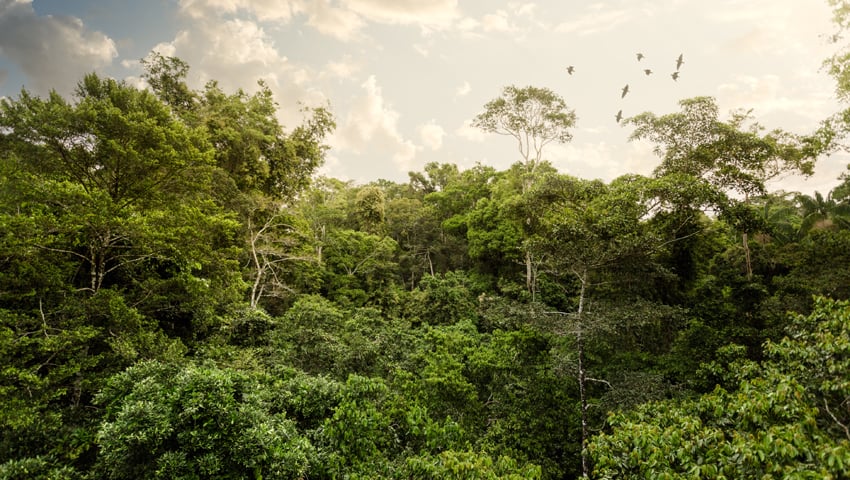This article by Monica Evans first appeared on Forests News
The climate crisis is getting worse, but we haven’t yet managed to ditch the fossil fuels that exacerbate it. So, the need to ramp up carbon sequestration is clearer than ever.
The land sector has huge potential to sequester and store more carbon, because it has lost vast amounts through deforestation and degradation, and some of this can be restored. As such, a growing number of policymakers, private sector and civil society representatives are backing and amplifying efforts to restore degraded forest ecosystems, protect those that remain intact, and employ more climate-smart practices on land being used for other purposes, such as agroecological techniques in agricultural landscapes.
But are these efforts making an impact at the global scale?
“Because forests are the dominant component of the land carbon sink, we need to know how much atmospheric carbon the world’s forests have been sequestering, where it is stored and whether recent trends are consistent with the desired strengthening of Earth’s land sink,” said the authors of a new study that sought to answer those questions.
To do so, the international and multidisciplinary team, led by the US Forest Service analysed several decades of data from the global forest community, combining this with forest area estimates from remote sensing in national forest inventories and other types of land surveys.
They found that the total amount of carbon stashed in the planet’s forests was steady in the 1990s and 2000s, and slightly smaller in the 2010s.
Yet at the biome level, significant changes have occurred—several of which are cause for concern. Carbon sinks in temperate and tropical regrowth forests have increased because the area of these kinds of forests has expanded. But they have decreased in boreal forests due to intensified disturbances, and in tropical intact forests because their overall area has shrunk.
Overall, said the co-authors, the global land carbon sink has grown, implying an increase in the non-forest-land carbon sink, as well as the considerable impact from large-scale reforestation and afforestation in terms of enhancing carbon sequestration.
Yet two-thirds of the benefit from this land carbon sink increase has been negated by tropical deforestation alone. “The single most important action for sustaining and increasing the forest carbon sink is to stop emissions from deforestation and degradation,” surmised the co-authors, “along with protecting the large carbon stocks that have accumulated over centuries, especially in boreal forest soils.”
That will require effective international cooperation; financial, legislative and other incentives, particularly in tropical countries; deforestation-free supply chains and well-managed selective logging, among other efforts, they said.
“Although soil carbon is not included, this global account underlines the importance of sustainable conservation of protected areas and restoration of the degraded land sector, especially in the tropics,” said Daniel Murdiyarso, a principal scientist at the Center for International Forestry Research and World Agroforestry (CIFOR-ICRAF) and a co-author of the study. “Future research priorities should incorporate soil carbon, including those in peatland and mangrove, which store 3-5 times higher carbon than upland forests.”
The study also found that annual harvested wood products increased by 10 per cent over the three decades studied. “Harvested wood products also need robust scrutiny, in light of the contribution of wood-based industries,” said Murdiyarso.
Overall, the results offered a clear message to proceed with caution, and not take forest carbon capacities for granted. “Although the global forest sink has endured undiminished for three decades, despite regional variations, it could be weakened by ageing forests, continuing deforestation and further intensification of disturbance regimes,” the co-authors concluded.
“To protect the carbon sink, land management policies are needed to limit deforestation, promote forest restoration and improve timber-harvesting practices.”
